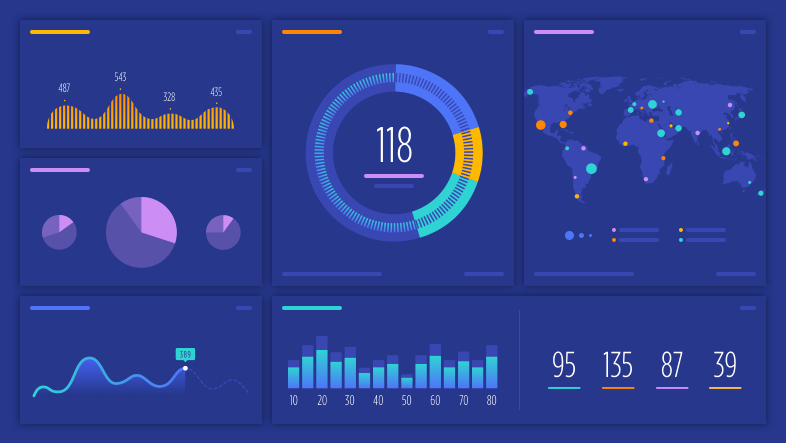
The Customers Report helps you better understand and analyze customer behavior. This report will show you where your customers are coming from, the percentage of new versus returning customers, their total spend and when they last placed an order. You'll also have access to individual customer profiles that details every order a customer has placed, and every product they've purchased.
This information will help you build effective customer loyalty programs and create tailored marketing campaigns based on customer history so you can tap your existing customers rather than constantly trying to acquire new shoppers. The Customers Report can be viewed under Analytics › Customers.
Top Line Statistics

Your Customer Summary starts with top line statistics including:
- Customers — unique customers in the selected time period
- New Customers — unique customers that purchase for first time in the selected time period
- % New — % of customers that have purchased for the first time
- % Returning — % of repeat customers
Customers Table
The Customers table lists all customers from your store and can be sorted by clicking the arrows next to any column heading. Clicking on a customer's email address or name will take you to the Customer Details Report, where you can find more granular information about that specific customer. Clicking the order number will take you to the Order Details Report. All guest orders are lumped into an Anonymous placeholder customer.
Pro Tip! Use the Export button to download the table to a CSV file.

- Email — the email address of the customer
- Name — the name of the customer
- Type — new or returning? Determined by whether the order placed within the selected date range was there first, second, etc.
- Cohort — a group of clients based on their lifetime with the store. Calculated as the date range between the client's first and most recent order.
- 1st Order Channel Attribution — the channel through which the customer found the store and made their first purchase
- Last Order Number — the order number of the client's most recent order. These numbers are not affected by any filtering done by the merchant in the control panel.
- Last Order Date — the date of the client's most recent order. These numbers are not affected by any filtering done by the merchant in the control panel.
- Last Order Amount — the amount of the client's most recent order. These numbers are not affected by any filtering done by the merchant in the control panel.
- Total Spent — the lifetime spend of the customer
Take Action with Data — This report is helpful in several ways:
- It provides a quick overview of how many new and returning customers you have to your store.
- It provides insight into a customer’s first order attribution channel.
- This information is helpful in determining the email addresses associated with a specific order channel so you may segment and market to these customers with highly-targeted campaigns.
For example, if a majority of your customers come through Social, check the Marketing Report to see which Social channel has the highest AOV. Let's say Facebook is your most profitable social channel. You can then retarget customers through Facebook ads or creating a Facebook Shop since you know it was key to driving their first purchase.
Customers Details Report
Here you can see the total amount the customer has spent at your store, their total number of orders, last purchase date, AOV (Average Order Value), and the price range of the products in their orders. Additionally, there are statistics for the percentage of discounted orders or products that particular customer has ordered. The customer’s full order history is available at the bottom of the report.

- Total Spent — lifetime spend of customer
- Orders — lifetime orders of customer
- Last Purchased — days since last purchase
- AOV — average order value of customer
- Item Price Range — range of price of item purchased by customer (exclude tax, shipping)
Take Action with Data — Once you drill into a user’s email address, you’re provided with a view of this unique customer. This is particularly useful should you decide to segment your high value customers and treat them a bit differently.
For example, you decide to pinpoint your best full-price customers. Filter by most revenue, gather their emails, days since last purchase, order numbers and lifetime spend. Determine how many of your repeat customers are full-price customers.
Now, you can send timed loyalty emails showing them new products before other customers (without a discount) or set up a loyalty program for these extremely loyal customers.


